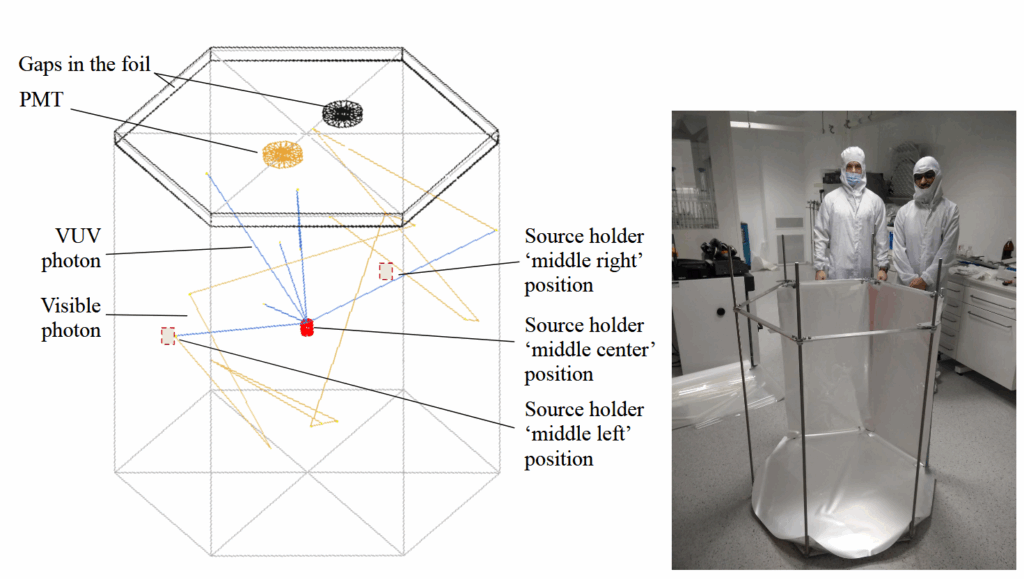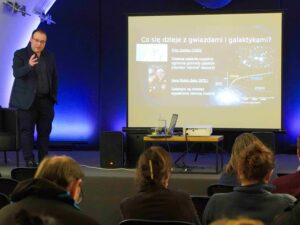
Views: 5
A new scientific article, “Demonstration of the light collection stability of a PEN-based wavelength shifting reflector in a tonne scale liquid argon detector,” has been published in the Journal of Instrumentation. The publication presents the results of a 2023 experimental campaign at CERN, carried out by researchers from Astrocent in collaboration with colleagues from the Technical University of Munich, University of Zurich, University of Edinburgh, Nikhef (the Dutch National Institute for Subatomic Physics), INFN Bologna, CERN and the University of Hawaii at Manoa. The measurement was one of the main experimental efforts planned in the DarkWave project.
What is it about?
Next-generation detectors used in neutrino and dark matter experiments rely on the ability to detect extremely faint flashes of light inside large volumes of liquid argon. This light is emitted in the ultraviolet (UV) range, which standard sensors can’t detect directly — so a special material called a wavelength shifter is used to convert it into visible light. The current standard, TPB, works well but is difficult to apply on large surfaces, making it impractical for very large detectors.
This study explores a promising alternative: PEN (polyethylene 2,6-naphthalate) — a common polyester film that’s easy to manufacture and scale. Researchers tested how well PEN performs over time in cryogenic conditions by placing 4 m² of it inside a two-tonne liquid argon dewar and monitoring its light-shifting performance over 12 days.
PEN maintained stable performance with no degradation, suggesting it could be a scalable and cost-effective solution for future detector designs.
This work was funded by the EU’s Horizon 2020 research and innovation programme under DarkWave project.



